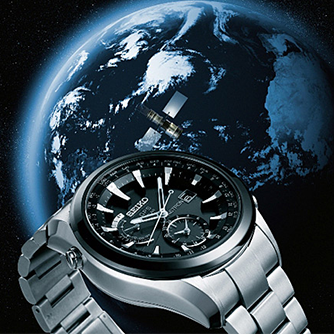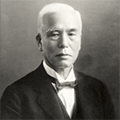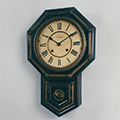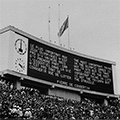The Quartz Innovation (the World Selects the Seiko Method)
1. Electronization of Watches
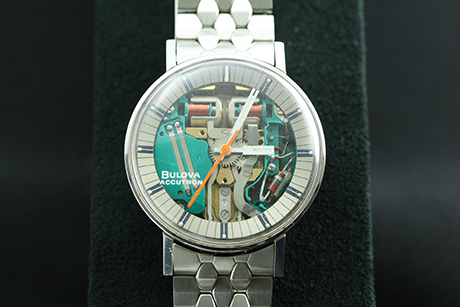
In 1957 Hamilton Watch Company introduced a battery-powered watch driven by a balance wheel with a hairspring. Three years later, in 1960, Bulova Corporation introduced a revolutionary tuning fork watch, the Accutron. These innovations shocked the global watch industry and provoked a frantic race to develop “electronized” watches.
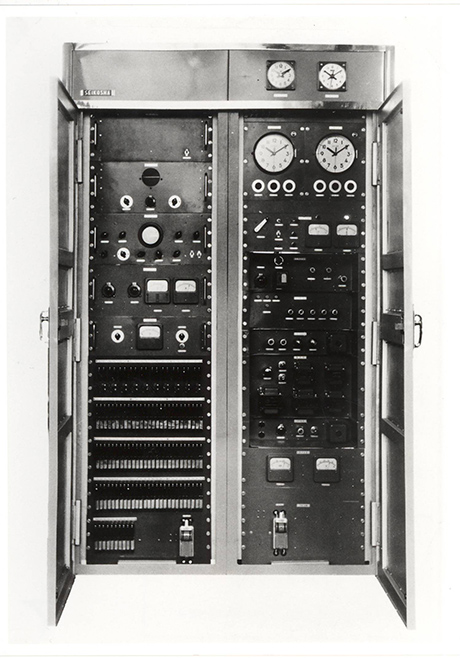
In 1958 Seiko developed and delivered a quartz clock for a broadcasting station, a clock about the size of a large locker. To make a watch based on the same principle, the scale of this clock had to be reduced by about 300,000 times.
In an in-house project set up in 1959, Seiko began studying the mechanisms of watches with hairspring-driven balance wheels, tuning fork watches, and quartz watches. The most promising and challenging option, the accurate quartz method, was judged to have the best prospects as a future target technology. Seiko researchers set out to develop the method at once.
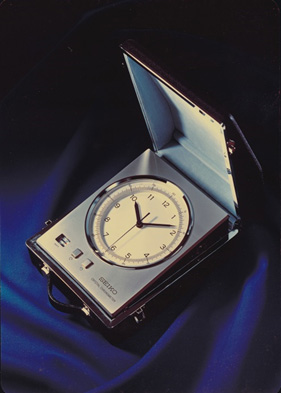
In 1960 Seiko hatched a plan to become the Official Timer of the 1964 Summer Olympics in Tokyo and set out at once to develop tabletop quartz clocks for the upcoming Games. Seiko completed the first tabletop clock for the Games in 1962. Then it applied upgraded designs to build a crystal chronometer to serve as the master clock for the Tokyo Olympics in 1964. Prototypes for a pocket watch and wristwatch were completed in 1966 and 1967, respectively. Seiko entered a new stage of rapid development when these prototypes finally evolved into commercial products at the end of the decade.
2. Development of the World's First Quartz Watch "Seiko Quartz Astron"
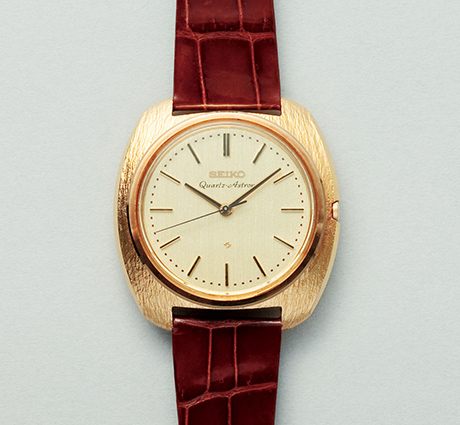
On December 25, 1969, Seiko introduced the world’s first quartz wristwatch, the Seiko Quartz Astron 35SQ. The watch sold for 450,000 yen, about the price of popular car in those days.
Not long afterwards, quartz methods developed by other companies converged into the Seiko method as a new global standard. Seiko’s position at the center attests to the excellence and foresight of Seiko’s technology.
The major technologies incorporated into Seiko Quartz Astron include a shockproof “tuning-fork-type crystal oscillator” remarkable for its small size and low power consumption; an “open type step motor” that saves power and space via dispersedly arranged motors and hand operation by the second; and an ultralow-power-consumption semiconductor called the CMOS-IC. After many upgrades in the decades since, the basic system and structure of the Seiko method remain unchanged.
The accomplishment was recognized by the IEEE (Institute of Electrical and Electronics Engineers) and received both an Innovation Recognition Award (2002) and IEEE Milestone (2004) award. The watch was also permanently exhibited in the Smithsonian Museum and certified as a Mechanical Engineering Heritage of Japan in 2014.
3. Spread of Quartz Watches
When Bulova marketed its tuning fork watches a few years earlier, Bulova’s decision to keep the technology proprietary confidential hindered commercial success. Learning from this lesson, Seiko decided to disclose a large part of the patents it had been granted during the development of its quartz watches. As a result, competitor watchmakers from both Japan and overseas adopted the Seiko method. This fueled the spread of quartz watches and sparked a heated race to develop smaller, thinner, more accurate, and less costly watches. The quartz watch rapidly became the dominant product on the market.
Small and thin watches
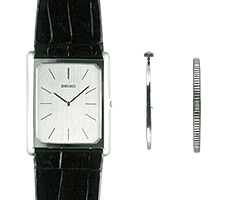
In 1972 Seiko developed the small caliber type 03, a scale difficult to achieve with mechanical watches, in order to cultivate a market for accurate watches for women. In 1973 the company developed the thinner and smaller caliber 4130 to cultivate a new market for men’s dress watches. This was followed by the introduction of an ultrathin watch with a 0.9-mm-thick movement (total case thickness of 2.5mm) in 1978.
Low-power consumption watches
Through its work to downsize timepieces and prolong battery life, Seiko made a significant advance in power conservation by developing a pulse width correction drive (eagle) circuit for the step motor in 1978. This changed the standard for the quartz technologies to come.
Accurate watches
In 1978 Seiko introduced “twin-quartz,” a technology employing a crystal oscillator for temperature correction. Twin quartz reduced the annual error (annual advance and delay) to only 5 seconds, edging up the accuracy of quartz further. The next advance, a crystal oscillator with a new vibration mode, was converged with IC temperature correction, a more fabricable technology.
Multifunctional watches
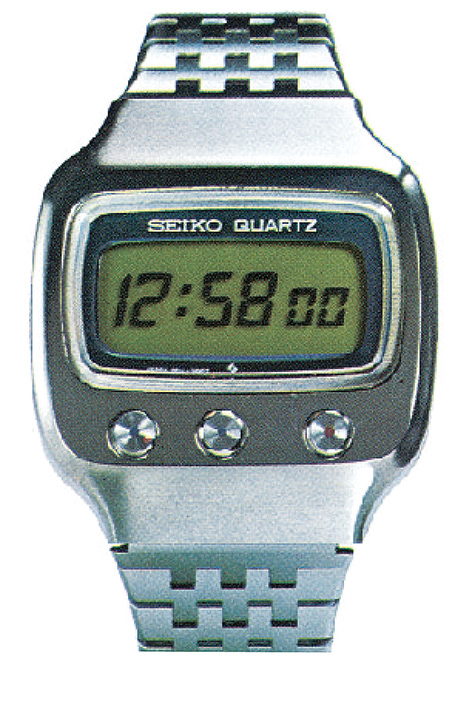
In 1973 Seiko introduced the world’s first digital quartz (with a second indication) equipped with an FE-type LCD, the mainstream display to this day. DSM-type LCDs and LED-type displays were both already available, but the more visible and power-efficient FE-type LCD was clearly better suited to become the standard for digital watches around the world.
Two Seiko watches reinforced the multifunctional watch trend: the 0634, the world’s first multifunctional digital quartz watch (with a chronograph), commercialized in 1975, and the A159, a digital quartz watch with an alarm chronograph, released in 1977.
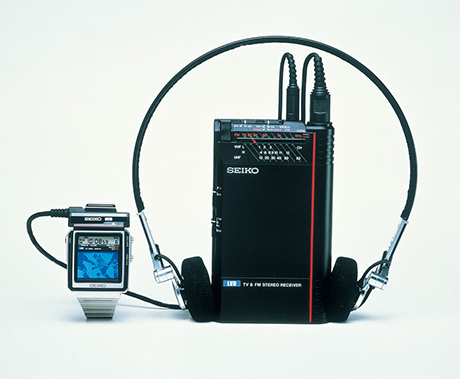
In 1982 Seiko introduced the world’s first LCD TV watch, a device that attracted attention for being wearable. The subsequent development of the computer watch and sensor watch demonstrated quartz’s potential for “multifunctionality,” something never achieved with mechanical watches. A new market was in the making.
4. Lower Costs and Sales of Movements to Third Parties Transform the Structure of the Timepiece Industry
The prices of quartz watches plummeted when the costs for parts fell and automatic assembly and production lines were developed. Next, analog quartz movements became commercially available, which provided complete watch assemblers and established an industrial structure where anyone could enter the market for complete watches.
China (Hong Kong) became an international production and assembly base for exterior parts, which quickly advanced the international specialization of watch production.
As global industrial development changed shape, Japanese manufacturers led the market for watch movements, which accelerated the spread of quartz. This development was partly unwelcome for Seiko, as it degraded the value of quartz watches and gradually elevated the value of mechanical watches unsuitable for mass production.


